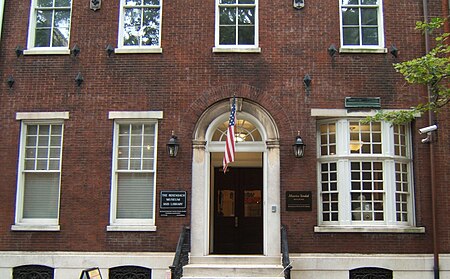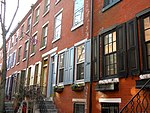Rosenbach Museum and Library

The Rosenbach is a Philadelphia museum and library located within two 19th-century townhouses. The historic houses contain the collections and treasures of Philip Rosenbach and his younger brother Dr. A. S. W. Rosenbach. The brothers owned the Rosenbach Company, which became the preeminent dealer of rare books, manuscripts and decorative arts during the first half of the 20th century. Dr. Rosenbach in particular was seminal in the rare book world, helping to build libraries such as the Widener Library at Harvard, The Huntington Library and the Folger Shakespeare Library. In 2013, the Rosenbach became a subsidiary of the Free Library of Philadelphia Foundation, but maintains its own board and operates independently of the public library system.
Excerpt from the Wikipedia article Rosenbach Museum and Library (License: CC BY-SA 3.0, Authors, Images).Rosenbach Museum and Library
Delancey Place, Philadelphia Center City
Geographical coordinates (GPS) Address Website External links Nearby Places Show on map
Geographical coordinates (GPS)
| Latitude | Longitude |
|---|---|
| N 39.9474 ° | E -75.1751 ° |
Address
The Rosenbach Museum & Library
Delancey Place
19103 Philadelphia, Center City
Pennsylvania, United States
Open on Google Maps









